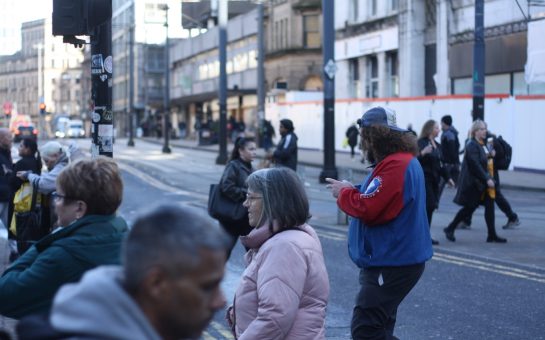More people than ever are opting to commute to work on their bikes, which can cause complications for motorists and pedestrians alike.
Most people are aware that crashing into a bike can have serious consequences for a motorist, but what happens if the cyclist was to crash into a pedestrian? Could they legally be penalised?
MM have teamed up with Olliers Solicitors, a leading criminal law firm based in Manchester, to find out.
This weeks question came from Jake Harvey, who sent in the following email.
——————————————————–
Hello all at Mancunian Matters, I have a question for your weekly legal section.
I cycle to work. It’s good for me and keeps me fit.
However… aside from the perils of facing communting drivers, there is also the issue of pesky pedestrians that I have to contend with!
If I were to be involved in an accident with a pedestrian, would I be liable in the same way as if I were behind the wheel of a car?
And if so, how does this work if cyclists are not ‘insured’ like a motorist?
Hope to hear from you soon!
——————————————————–
Cyclists are permitted to use public roads and are therefore required to abide by the laws that govern road users.
Perhaps the most important legislation for cyclists is The Road Traffic Act 1988. It contains all the main motoring offences. There are several sub sections relating specifically to cyclists:
The main obligation for a cyclist using the road is to comply with all traffic signs and signals which is dealt in Section 36 of the Act.
Section 24 confirms that ‘not more than one person may be carried on a road on a bicycle not propelled by mechanical power unless it is constructed or adapted for the carriage of more than one person’. Both the cyclist and the passenger will be guilty of an offence in these circumstances.
Under Section 26 it is an offence for a cyclist to hold, or get onto, a vehicle in order to be towed or carried.
Section 28 deals with dangerous cycling. A person who rides a cycle on a road dangerously is guilty of an offence. A cyclist will be regarded as riding dangerously if the way he rides falls far below what would be expected of a competent and careful cyclist, and it would be obvious to a competent and careful cyclist that riding in that way would be dangerous.
Section 29 deals with careless and inconsiderate cycling. An offence is committed under the Road Traffic Act 1988 if a person rides a cycle on a road without due care and attention, or without reasonable consideration for other people using the road.
Cycling whilst under the influence of drink or drugs is dealt within Section 30. A cyclist will be found guilty of an offence if unfit to ride through drink or drugs (that is to say, is under the influence of drink or a drug to such an extent as to be incapable of having proper control of the cycle).
There are other statutory provisions that are relevant but the Road Traffic Act 1988 is probably the most important. All of the above however relates to criminal penalties.
Clearly a cyclist cannot be given penalty points however they would be liable to a fine if convicted of the above offences. Most offences however relating to cyclists are dealt with by way of fixed penalty notices.
You however raise the issue of whether or not a cyclist could be liable in a collision involving , for example, a pedestrian.
This would involve such pedestrian bringing a civil action against a cyclist for damages should they be involved following an incident. If the cyclist was indeed responsible for the crash, should an injured party decide to take things to court, a cyclist can find themselves in the position of ‘defendant’ in any civil action for personal injury compensation.
Of course the relative damage a cyclist could do to anyone or anything apart from another cyclist or a pedestrian is minimal.
In cases where cyclists have been sued for damages the claimant is most often an injured pedestrian or another cyclist.
Firstly the court would need to consider liability ie. was the cyclist at fault and if so, then it would goon to consider the value of any claim.
It is possible for cyclists to have insurance which includes third party public liability cover.
This would cover the costs of any claim brought against a cyclist following a collision and injury or damage.
Without this, if you find yourself on the losing side of a compensation claim, that money (which could amount to several thousands of pounds) would have to be paid by the cyclist themselves.
To get your law questions answered by Olliers’ Legal Eagle, all you need to do is email your legal question to newsdesk (at) mancunianmatters.co.uk
You can find more about Olliers Solicitors here.

Images courtesy of Geraint Rowland, with thanks.



